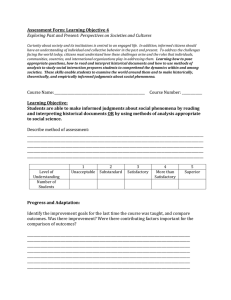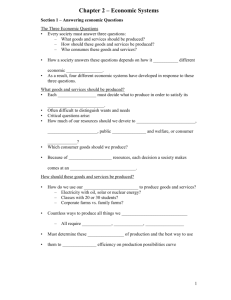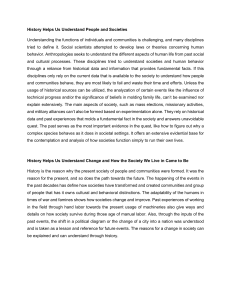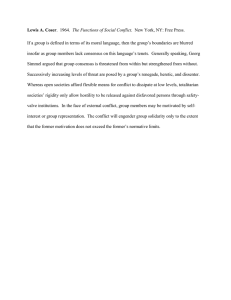GENERAL EDUCATION
advertisement
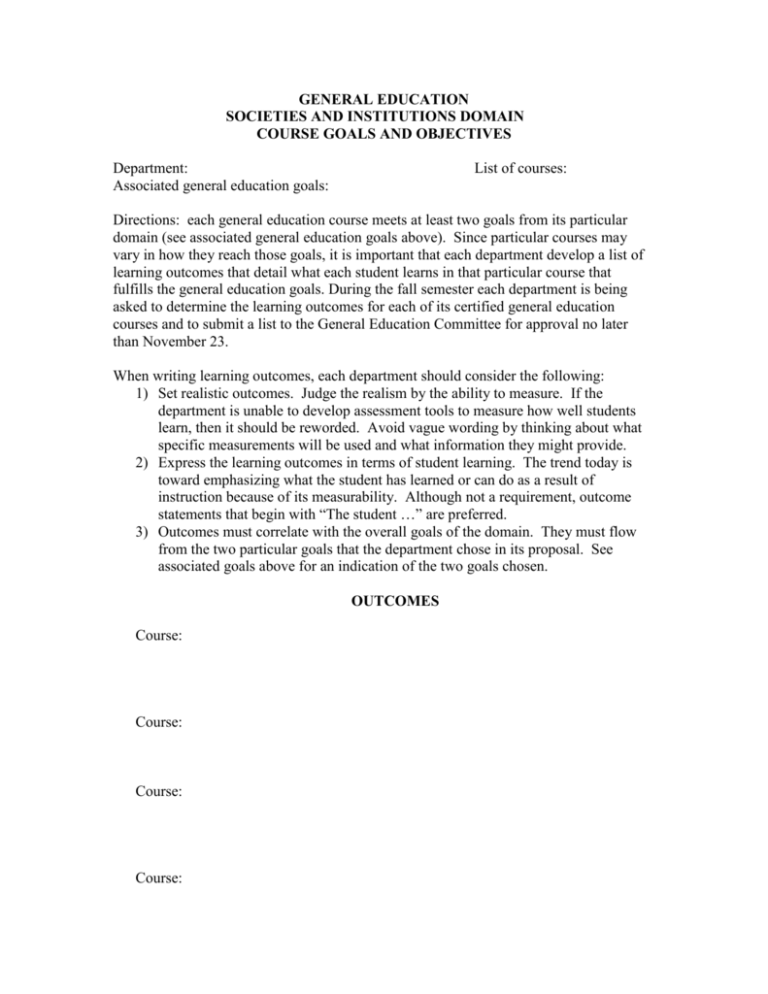
GENERAL EDUCATION SOCIETIES AND INSTITUTIONS DOMAIN COURSE GOALS AND OBJECTIVES Department: Associated general education goals: List of courses: Directions: each general education course meets at least two goals from its particular domain (see associated general education goals above). Since particular courses may vary in how they reach those goals, it is important that each department develop a list of learning outcomes that detail what each student learns in that particular course that fulfills the general education goals. During the fall semester each department is being asked to determine the learning outcomes for each of its certified general education courses and to submit a list to the General Education Committee for approval no later than November 23. When writing learning outcomes, each department should consider the following: 1) Set realistic outcomes. Judge the realism by the ability to measure. If the department is unable to develop assessment tools to measure how well students learn, then it should be reworded. Avoid vague wording by thinking about what specific measurements will be used and what information they might provide. 2) Express the learning outcomes in terms of student learning. The trend today is toward emphasizing what the student has learned or can do as a result of instruction because of its measurability. Although not a requirement, outcome statements that begin with “The student …” are preferred. 3) Outcomes must correlate with the overall goals of the domain. They must flow from the two particular goals that the department chose in its proposal. See associated goals above for an indication of the two goals chosen. OUTCOMES Course: Course: Course: Course: GOALS FOR SOCIETIES AND INSTITUTIONS DOMAIN Goal 10: Understand the development of cultures and organizations of human societies throughout the world and their changing interrelationships with Western Society. Students comprehend how various societies have approached the common problems of human existence over time. They learn that solutions to those problems vary because of tradition, geography, philosophy, or religion, economic development, technological change and political power. Students understand how and why these societies have interacted with Western Society, where applicable. Goal 11: Evaluate the impact of theories, events and institutions on the social, economic, legal and political aspects of society. Students develop knowledge about the markets, social organizations, legal systems, and levels of government that comprise society. They understand, through study of theories, how these institutions function, interact with each other, and evolve in our society and others. Goal 12: Comprehend and appreciate the development of diversity in America in all its forms. Students comprehend the historical development of the United States as a democratic political system and the ideals, rights and Institutions associated with that system. Students appreciate the diverse characteristics of the populations that comprised American society over time, the ways devised to cope with these differences, and the impact of conflicts over differences on politics and society in general. Diversity includes but is not limited to the characteristics of race, social and economic class, religion, gender, ethnicity, age, disability, lifestyle and political identity.





